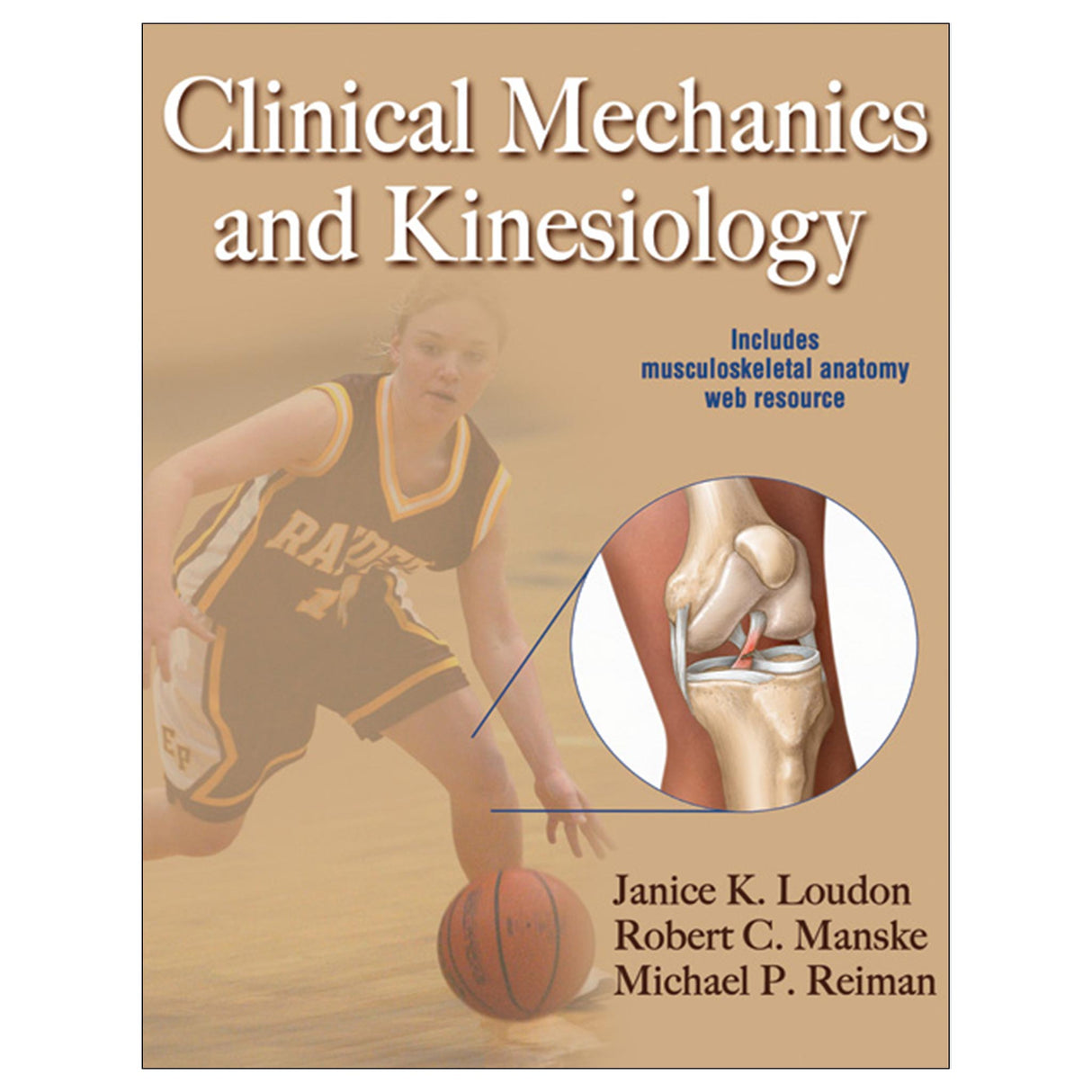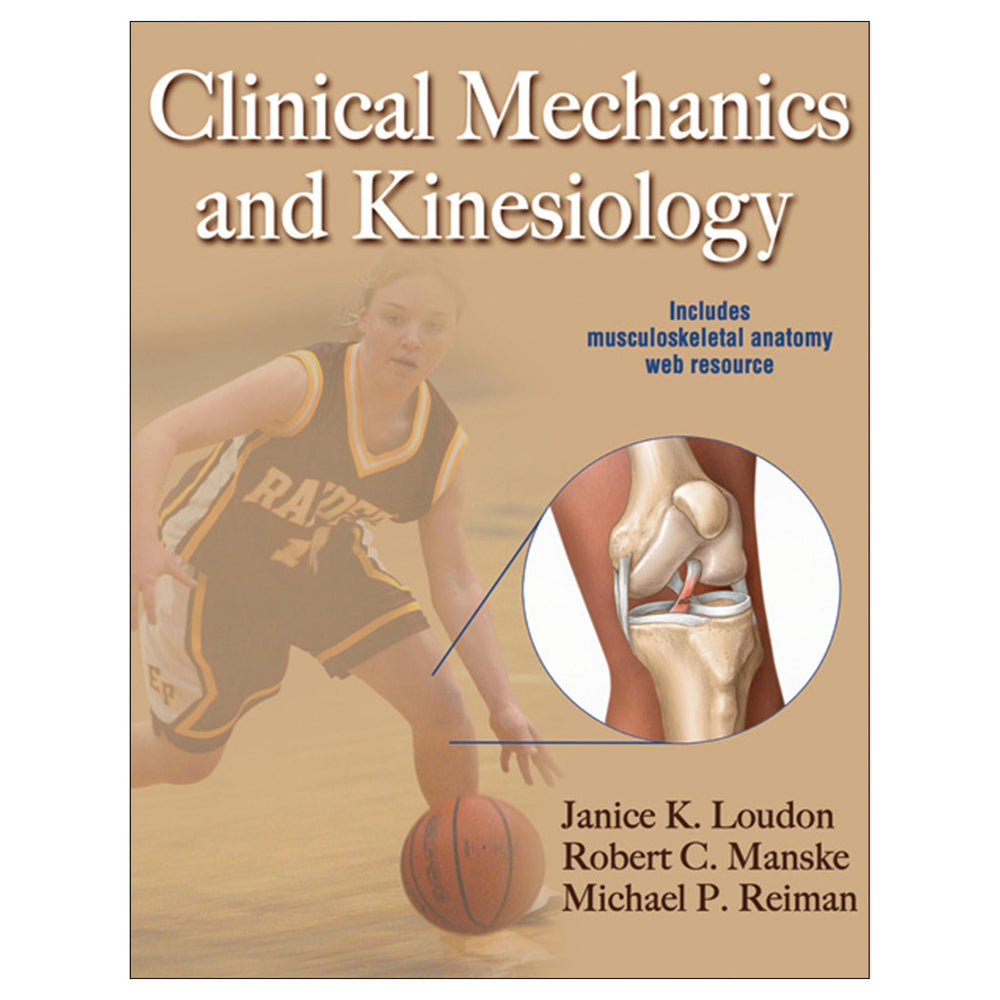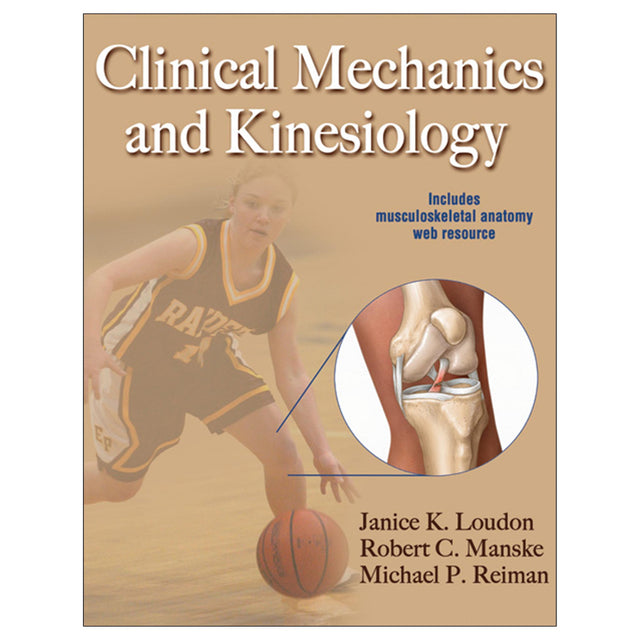Clinical Mechanics and Kinesiology
$98.00 USD
Clinical Mechanics and Kinesiology provides a solid foundation so that students of physical therapy, occupational therapy, and athletic training can understand biomechanics and functional anatomy as they relate to both normal and abnormal movement. Written by active clinicians with more than 40 combined years of clinical and teaching experience, this text is also a practical reference for rehabilitation professionals working with a range of populations and pathologies.
Taking a clinical approach not found in other texts, Clinical Mechanics and Kinesiology follows a logical progression that maximizes learning. It first presents biomechanical principles that students must understand in order to examine and treat clients and patients undergoing rehabilitation. Next, it explores muscle and nerve physiology and function of the muscle and joint systems. Then the focus shifts to applying those concepts to specific joints. Divided into 10 regions, each joint is evaluated by the bones that make up the joints; the joint articulation, anatomy, and function; and the muscles that act on the joints. In the final section of the text, students gain insight into full-body movement patterns of particular concern to rehabilitation specialists. They will examine not only the usual topics of posture and walking gait but also running gait and the mechanics of jumping and cutting—some of the most common sources of injury.
Clinical Mechanics and Kinesiology is enhanced with over 360 pieces of full-color art. Unique combination figures integrate detailed bone illustrations and photos. Medical art displays locations of bones, muscles, and ligaments. Arthrokinematic motions are clearly shown with the appropriate skeletal locations, making it easy for students to see how a particular motion relates to the rest of the body. Several other features also aid in students’ learning and retention:
• Clinical Correlations included in each chapter help students increase their understanding of biomechanics and kinesiology and apply the theoretical content to clinical practice.
• Problem Sets and Practice It sidebars with activities in chapters 1 and 2 assist students in applying and mastering biomechanical concepts.
• Pedagogical aids such as chapter objectives and conclusions, key points, glossary terms, and review questions highlight important information so students can quickly grasp and review the main points.
In addition, instructors will have online access to an instructor guide, image bank, and test package. The instructor guide further encourages students’ learning by offering class assignments and lab activities not featured in the book. The class assignments, at least three per chapter, are quick activities that can be completed in class. The lab activities are longer assignments intended to be completed outside the classroom by pairs of students. Each lab contains an overview, a statement of purpose, a list of equipment needed, and instruction on data collection and analysis.
Written for students and practitioners of rehabilitation programs, Clinical Mechanics and Kinesiology provides a foundation in kinesiology reinforced by numerous clinically applicable examples. Students will gain a strong understanding of mechanical principles governing human motion, with particular knowledge of both normal and abnormal functional motions, and be able to apply their knowledge directly to rehabilitation protocols.
Audience
Primary text for students of physical therapy, occupational therapy, and athletic training enrolled in graduate or professional programs; reference for musculoskeletal rehabilitation specialists.
Part I: Basic Biomechanics
Chapter 1. Kinematics
Movement Mechanics
Joint Motion
Kinematic Analyses
Conclusion
Review Questions
Chapter 2. Kinetics
Basic Kinetic Terms
Forces
Levers
Moments
Vector Analysis
Force Diagrams
Clinical Application of Kinetics
Conclusion
Review Questions
Part II: Basic Muscle and Joint Physiology and Function
Chapter 3. Muscle and Nerve Physiology
Muscle Structure
Motor Unit
Muscle Fiber Types
Muscle Contraction
Nervous System
Neuromuscular Control
Conclusion
Review Questions
Chapter 4. Muscle Performance and Function
Skeletal Muscle Properties
Muscle Contractions
Muscle Functions
Muscle Flexibility and Range of Motion
Muscle Performance
Factors Affecting Muscle Performance
Clinical Measures of Muscle Performance
Effects of Injury, Immobilization, and Aging on Muscle Performance
Conclusion
Review Questions
Chapter 5. Human Joint Structure and Function
Joints
Periarticular Tissues
Joint Positions and Movements
Conclusion
Review Questions
Part III: Regional Anatomy and Kinesiology
Chapter 6. Cervical Spine
Vertebral Column
Osteology
Joint Articulations
Joint Anatomy
Joint Function
Muscles
Conclusion
Review Questions
Chapter 7. Craniomandibular Complex
Osteology
Joint Articulations
Joint Anatomy
Joint Function
Muscles
Conclusion
Review Questions
Chapter 8. Thoracic Spine
Osteology
Joint Articulations
Joint Anatomy
Joint Function
Muscles
Conclusion
Review Questions
Chapter 9. Lumbar Spine and Pelvic Girdle
Osteology
Joint Articulations
Joint Anatomy
Joint Function
Muscles
Conclusion
Review Questions
Chapter 10. Shoulder
Osteology
Joint Articulations
Joint Anatomy
Joint Function
Muscles
Conclusion
Review Questions
Chapter 11. Elbow and Forearm
Osteology
Joint Articulations
Joint Anatomy
Joint Function
Muscles
Conclusion
Review Questions
Chapter 12. Wrist and Hand
Osteology
Joint Articulations
Joint Anatomy
Joint Function
Muscles
Conclusion
Review Questions
Chapter 13. Hip
Osteology
Joint Articulations
Joint Anatomy
Joint Function
Muscles
Conclusion
Review Questions
Chapter 14. Knee
Osteology
Joint Articulations
Joint Anatomy
Joint Function
Muscles
Conclusion
Review Questions
Chapter 15. Foot and Ankle
Osteology
Joint Articulations
Joint Anatomy
Joint Function
Muscles
Conclusion
Review Questions
Part IV: Basic Movements and Clinical Applications
Chapter 16. Posture
Body Types
Standing Posture
Sitting and Lying Postures
Postural Faults
Conclusion
Review Questions
Chapter 17. Walking Gait
Determinants of Gait
Gait Sequence
Gait Kinematics
Muscle Activity During Gait
Gait Kinetics
Gait Parameters
Abnormal Gait
Conclusion
Review Questions
Chapter 18. Running Gait
Running Compared With Walking
Running Sequence
Running Kinematics
Muscle Activity During Running
Running Kinetics
Running Injuries
Conclusion
Review Questions
Chapter 19. Cutting and Jumping
Cutting
Jumping
Conclusion
Review Questions
Instructor guide. Includes an overview of the ancillaries, sample syllabus, and chapter-specific files containing a chapter summary, chapter outline, class assignments, lab activities, tips on presenting hard-to-grasp concepts, and answers to problem sets and chapter review questions.
Test package. Features more than 420 multiple-choice, true-or-false, short-answer, and fill-in-the-blank questions and offers an efficient tool for creating new assessments or supplementing existing tests and quizzes.
Image bank. Includes all of the figures, tables, and photos from the text, sorted by chapter, which can be used in developing a customized presentation based on specific course requirements.





